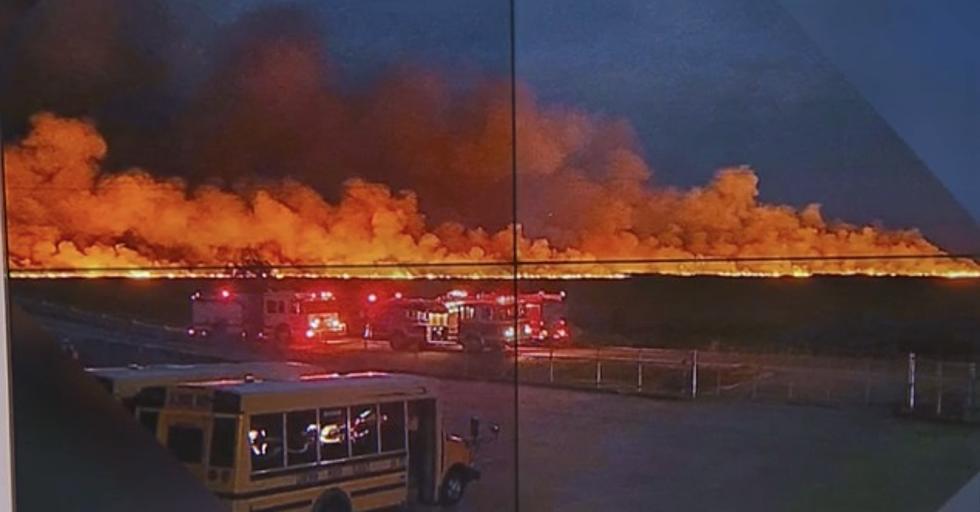
Marsh Fire in Cameron & Red Flag Warnings for Parts of Louisiana
(Cameron, Louisiana) - Firefighters in Cameron Parish were extremely busy this weekend fighting a marsh fire that officials say broke out in two areas.
Cameron Parish Fire Chief Tim Dupont says the burned areas were about how the size of the city of Carencro so nearly four miles of area was on fire.
He adds there were two fires that got started. He says the one on the north side was started by a cigarette, and he did not explain why the one on the south side near Trosclair got started.
Chief Dupont says when the fires were reported Saturday night, it took firefighters 24 hours to make sure the flames had been squashed.
When you look at the damage, Chief Dupont says it appears that around 2,000 acres of marsh burned up. He says thankfully there was no one that was hurt and there was no damage to property.
Conditions across the state are extremely dry. Officials want to remind everyone that Governor John Bel Edwards did issue a burn ban across the state meaning there is no outdoor burning allowed. Yes, you can still use your barbeque pits and fire pits, but no open burning of trash for instance.
Conditions are so dry the state Fire Marshal's Office is reminding residents that one ember from a cigarette or chains dragging on the ground is enough to start a fire.
These are dangerous times. The National Weather Service says that several areas of our state are considered to be in red zones meaning the possibility of a fire hazard is greater in these areas.
Conditions are ripe for a fire to start just with a tiny ember. Last week near Florien, Louisiana, a wildfire there burned over two dozen homes and 19 cars.
